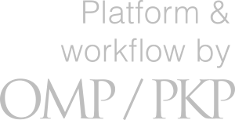Nostot
-
Kanssatutkimus osallistaa
NostoLue lisääKanssatutkimus: Ihanteet ja käytännöt on ensimmäinen suomenkielinen kirja tästä tutkimuksellisesta lähestymistavasta, jossa osallistujat eivät ole vain tutkimuksen kohteita, vaan aktiivisia tutkimuksen toteuttajia.
Arvomme
Avoimuus, vaikuttavuus, vastuullisuus ja moniäänisyys.
Missiomme
Tampere University Press palvelee tiedeyhteisöä julkaisemalla laadukkaita tiedekirjoja. Tuomme vastuullisesti tuotettua, luotettavaa ja tutkittua tietoa kaikkien saataville sekä kotimaisilla kielillä että englanniksi.
Visiomme
Tampere University Press on taloudellisesti ja eettisesti kestävällä tavalla toimiva, arvostettu tiedekustantamo ja suunnannäyttäjä, jonka teokset tuovat uusia avauksia yhteiskunnallisesti ja kulttuurisesti tärkeisiin tutkimusaiheisiin.







